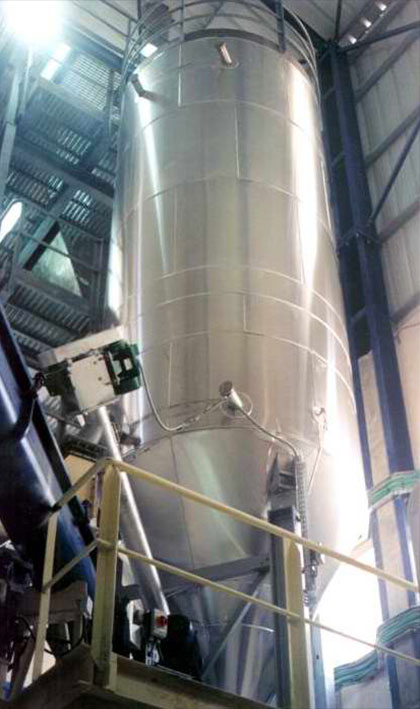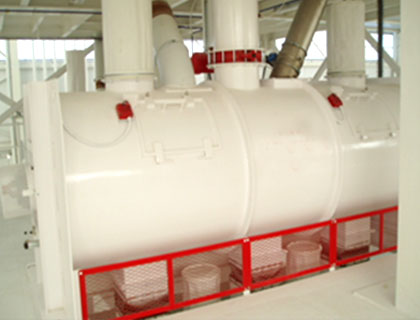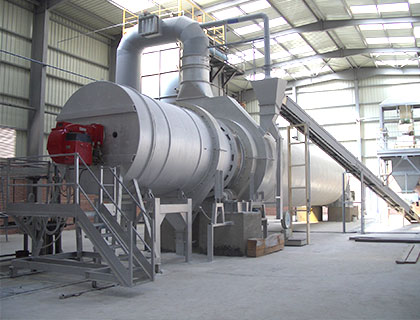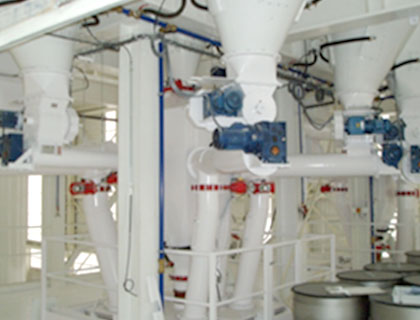ALPHAPLATRE Our scope of activity
Plaster
The plaster is obtained after gypsum transformation. This transformation is achieved by calcination, which dehydrates the gypsum and thus transforms it into plaster. Alphaplatre designs, manufactures and installs complete plaster production units, from the primary crushing to the mixing and coatings production units.
Alphaplatre offers different calcining processes according to customers’ requirements and compatible with numerous energy resources. Our calcination solutions are detailed below:
Vertical kiln:
Process description
This process enables a constant and slow calcination of the gypsum by direct contact with the hot gases. The high quality plaster obtained has similar characteristics to a mixture of 85% hemihydrate and 15% alpha-hemihydrate.
In the kiln, gypsum falls vertically between the two jackets around the combustion chamber. A burner placed at the top of the kiln produces hot gases flowing through the gypsum, descending from bottom to top, ensuring the rotational movement and, therefore, the uniformity of the calcination. Gypsum dehydrates gradually to be transformed into plaster at the base of the kiln.
Key figures
- Capacity: from 6 to 18.5 t/h
- Consumption (Natural gas) : Less than 190 kcal/kg of plaster
Advantages of our solution
- Financial savings – The initial investment can be up to 20% cheaper than a roller mill solution
- Energy consumption – The gas consumption required for the production of 1 kg of plaster is very low, making it an excellent energy-efficient technology.
- Maintenance cost savings – This solution does not include refractory or moving parts in the kiln – neither large filters nor big fans. The absence of these items leads, therefore, to a reduction in the maintenance costs.
- Operating comfort – With our solution there is no need for buffer silo and start-up is very easy.
Horizontal kiln:
Process description
This horizontal kiln with 2 tubes allows the continuous calcination of the gypsum. It was designed for the hemihydrate and over-cooked productions. Gypsum is automatically fed into the kiln thanks to a belt feeder then gypsum makes a round trip within the kiln through two concentric circuits.
The two circuits are totally different:
- The first allows a gradual rise in temperature by recovering cooled gas against products flow
- The second is subject to hot gases under dynamic pressure and significant mixing facilitating calcination homogenisation.
The calcination temperature can be adapted easily in order to get the right balance of both types of plaster.
Key figures
- Capacity : 14 – 16 t/h
- Consumption (Fuel) : 260kcal/kg of plaster
Advantages of our solution
- Regularity and flexibility – The regularity of the plaster produced and the ease of control to achieve high quality results.
- Energy savings – The design of the kiln enables a high energy efficiency and thus reduces the energy consumption.




